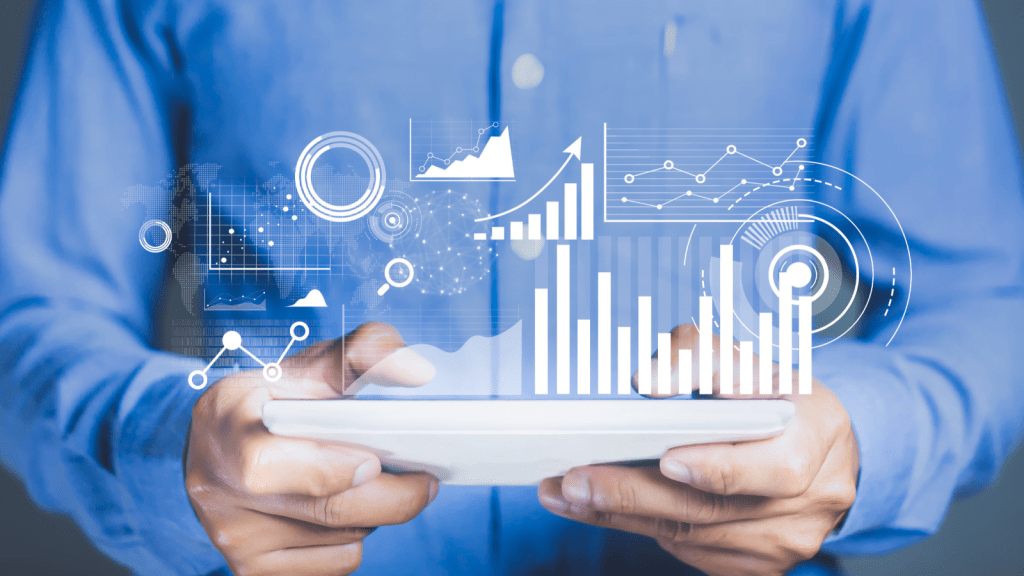
- May 9, 2023
- Admin
- 0 Comments
- Banking IT Service, Informational Technology Blog
The Power of Business Intelligence and Visualization
Business Intelligence & Visualization: A Comprehensive Guide
At a time when companies are rapidly evolving and shifting their strategies rapidly, being aware of your company’s performance and making informed decisions are vitally important. Business Intelligence (BI) involves collecting, analyzing and presenting company data to aid decision making processes while visualisation provides visual depictions that allow people to quickly comprehend complex data sets. We will explore Business Intelligence and Visualization here in detail and show how these tools can provide you with insights that improve decision making processes, increase effectiveness and facilitate success in business.Introduction
Firms produce vast quantities of information which makes it increasingly difficult to draw meaningful inferences from this data. Business Intelligence and Visualization come to the rescue here by offering an effective means of analysing and presenting this data to decision makers for analysis and interpretation. By employing Business Intelligence and Visualization solutions, firms gain an edge over their competition while making more informed decisions leading to more successful outcomes.What is Business Intelligence (BI)?
Business intelligence (BI) refers to a collection, analysis and presentation of data from business world to aid decision makers in making more effective choices. Utilizing various methods and tools, BI helps organizations optimize processes, recognize new opportunities and reduce risks while using this method as part of its core operations. BI includes processes, people and technology.Different Types of Business Intelligence
There are four primary forms of Business Intelligence (BI).Descriptive Reports:
provide an in-depth explanation of past events and provide answers to “What Happened?” They also serve as dashboards or scorecards, with several use cases described herein.Diagnostic BI Analytics:
Diagnostic BI analytics aims to uncover the causes of events by exploring data. Diagnostic BI uses methods such as data mining, drill-down analysis, and Online Analytical Processing (OLAP) in order to locate the root of any issue or problem.Predictive Business Intelligence:
Predictive BI employs statistical models incorporating machine learning technology to anticipate future events. Predictive Bi can assist businesses with forecasting demand, spotting trends and projecting sales projections.Prescriptive Business Intelligence:
Prescriptive BI is the practice of using data analytics to suggest actions to take in response to insights gained by analysing it, thus helping organizations optimize processes, reduce expenses, and boost efficiency.Benefits of Business Intelligence (BI)
- Implementation of a Business Intelligence plan can bring numerous advantages to an organization. These advantages may include:
- Improved Decision Making BI gives decision makers access to instantaneous data that enables them to make timely strategic decisions.
- Increased efficiency can assist organizations in streamlining their processes and cutting costs.
- Better Customer Insights for Customers Business Intelligence can aid companies in having a deeper understanding of customer needs, preferences, and behaviors.
- Increase Revenue More Revenue BI is available to assist businesses in uncovering untapped sources of revenue and potential.
- Data Visualization: Presenting Information Accurately
- “Data” refers to visualizing information so users can make sense of complex data more easily. Data visualisation uses charts, graphs and other visual aids to make information easy for individuals to understand; by visualizing data companies can discover insights which would otherwise not have been apparent in raw form.
Types of Data Visualization Services Available Today
There are various methods of data visualization available today, such as: Line Charts : Line charts can be used to illustrate shifts over time. Bar Charts : Bar charts are used to make complex concepts simple. Bar Charts >> Bar charts : can be used to represent data across several categories in an easy way. Pie Charts : Pie charts are used to display the percentages for different categories. Scatter Plots : Scatter plots are used to show the relationship between two distinct variables. “Heatmaps” are used to display the amount of detail present in an area.Benefits of Data Visualization
Data Visualization offers many advantages, including:- Data Visualization Helps People Gain Quick Understanding Data visualisation is an effective way of quickly comprehending complex information quickly.
- Analytics Discovery Data Visualization Analytics Discovery and Data Visualization can assist companies in discovering patterns or relationships within non-structured information that might have gone undetected otherwise.
- Visual communication aids all parties involved with communicating data-driven information efficiently and clearly.
Best Practices for Data Visualization
To create efficient visualizations of data and ensure effective representation, it is vitally important that the best practices be observed, including:- Simplicity Is Key – To keep visuals simple and understandable for all viewers.
- Accuracy Confirm that the visualization accurately represents your data.
- Relevance – To maximize data utilization, focus on what matters while avoiding too much visual information that contains non-relevant details.
- Consistency – Keep the visualisation consistent by employing consistent styles, fonts, colors and styles across its entirety.
Integrating Business Intelligence and Visualization: The Perfect Partner
Combining Business Intelligence and Visualization allows businesses to draw insights from data. While Business Intelligence allows you to analyze it, Visualization presents it in an accessible format so users can gain more from this process. These two approaches enable businesses to understand processes better, identify opportunities more quickly, and make more informed decisions based on information.Tools for Business Intelligence and Visualization
Business Intelligence and Visualization tools such as: Tableau is an industry standard business intelligence (BI) and visualization platform, renowned for creating interactive dashboards and reports. PowerBI is an interactive report and visualisation platform created by Microsoft that allows users to build interactive reports and visualisations. QlikView is an advanced data visualization and business intelligence (BI) tool which facilitates real-time data analysis in real time. Domo is an intuitive data visualization and business intelligence (BI) software platform hosted in the cloud that provides real-time insight into data.Implementing Business Intelligence and Visualization into Your Organization
To implement Business Intelligence and Visualization within your business, follow these steps.Set Your Goals – By using visualization and BI tools to establish your goals and objectives, it can help you identify them more clearly.
- Select the most effective Visualization and BI tools Select a tool that meets the specific requirements of your business.
- Analyse and collect information To gain an in-depth knowledge of your company’s actions, it is necessary to collect relevant data.
- Develop Data Visualizations Effective data visualizations can effectively communicate the insights from data.
- Collaborate with stakeholders to gain their perspectives to provide data insights that inform decision making processes.
Challenges of Business Intelligence and Visualization Solutions
Although BI (or Data Visualization) provides numerous benefits, there may also be challenges: Checking Data Quality – it is of utmost importance that the accuracy of data utilized in visual analysis be monitored in order to prevent miscalculation of results and potential mistakes from occurring. Visualization, Business Intelligence (BI), and software solutions can be intricate processes requiring expertise in various fields including data analysis, statistical analysis, and software engineering. Costs – Implementing Business Analytics and Visualization can be expensive, necessitating an investment of time, software, hardware and personnel resources.Future Trends of Business Intelligence and Visualization Solutions
Future prospects of Business Intelligence and Visualization are optimistic, and some emerging trends should be monitored closely:- Echtzeit Analytics – Echtzeit analytics offer instantaneous insight that enables companies to react swiftly to any changes in the environment.
- Artificial Intelligence – Artificial intelligence can be used to automate data analysis and identify patterns or trends which humans might miss.
- Machine Learning – Machine Learning algorithms can be used to predict future outcomes and make recommendations based on analysis of data.
- Mobile Business Intelligence – Mobile Business Intelligence allows users to gain insights into data from any location, making decision-making faster and more informed.
Conclusion
Business Intelligence and Visualization provide businesses with an effective means to extract intelligence from data. By bringing these two disciplines together, businesses can improve their processes, identify opportunities and reduce risks. Implementation requires a holistic approach encompassing processes, people and technology – though implementation may present its own set of issues; its benefits more than justify any initial difficulties. In terms of future advancements of these practices are promising with numerous trends emerging to assist organizations gain insight from data.FAQs
- What Is Business Intelligence (BI)?


Leave a Comment